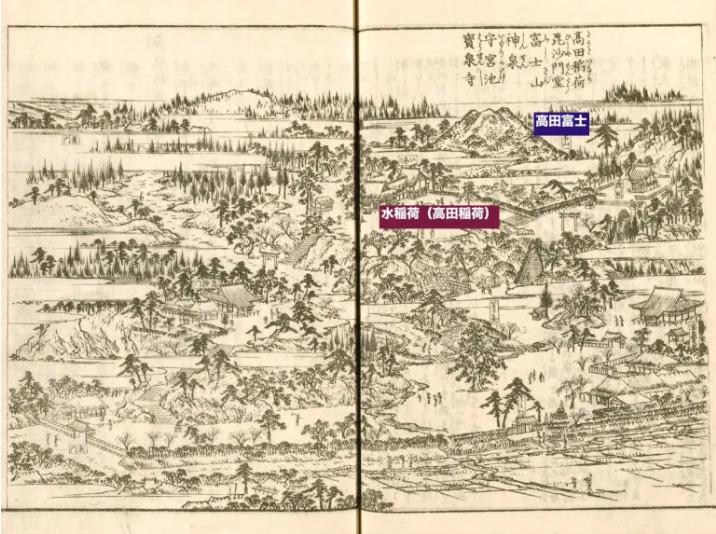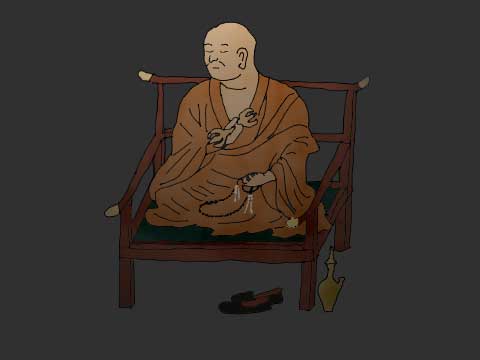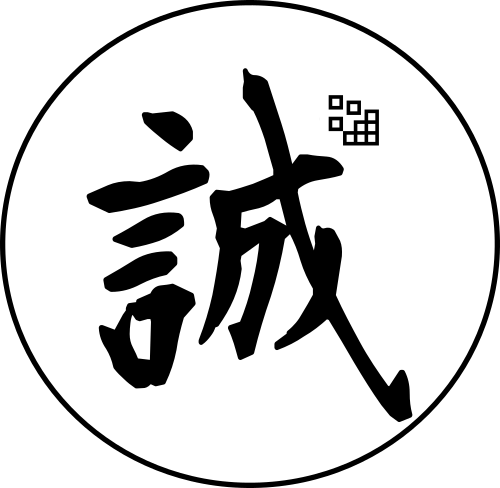Did you know that during the Tokugawa period, mountains were the object of worship, and there was a custom to set up groups and climb mountains together?
The activities of Fujikō consist of two main events, the regular ritual called “Ogami” and the pilgrimage to climb Mount Fuji known as “fujimode.” During the “Ogami” ritual, they recite their liturgical scriptures called “Otsutae” and perform “otakiage” by using an assembled altar called “Ogamidansu” to offer their prayers.
As a focal point of their faith, some Fujikō groups built “Fujizuka” (also known as “Fujitsuka”), mounds where they enshrined the deity of Mount Fuji by piling stones and soil (sometimes substituting natural mountains). For further details, refer to the article on “Fujizuka.”
source: Free encyclopedia ‘Wikipedia.’
Furthermore, on a certain website, it is explained as follows.
During the Edo period, there were two main types of “kō” (religious associations): those based on faith, represented by “Ise-kō” and “Fuji-kō,” and those aimed at economic mutual assistance, represented by “Tanomoshiko” and “Mujinko.” In both cases, members of the “kō” would regularly contribute money, and in the former case, they would use that money to send several individuals as representatives of the “kō” on pilgrimages to Ise or Mount Fuji. In the latter case, a system was in place where individuals who won the drawing of lots (or similar methods) could access a consolidated fund in priority. Both the Ise pilgrimage and Mount Fuji pilgrimage were not only religious journeys but also opportunities for sightseeing and exploring various famous places and historical sites in Japan. These trips were also considered “educational journeys, taken to satisfy intellectual curiosity.”
source:NPO江戸連
What is “Monomiyusan” ?

“Monomiyusan” (物見遊山) refers to the act of sightseeing and strolling around for pleasure.
The term “Monomiyusan” does not have a specific etymology; it is simply a combination of the words “monomi” (物見), meaning “sightseeing” or “viewing,” and “yūzan” (遊山), meaning “enjoying mountains” or “mountain outing.”
The popularity of “Monomiyusan” journeys among the common people is said to have spread and become widespread during the Edo period.
One of the representative examples of this is the “O-Ise-Mairi” pilgrimage. Common people obtained the moral justification of “O-Ise-Mairi” and then began to travel to Kyoto and Osaka afterward. They started to enjoy their journeys by weaving entertainment into their religious purposes.
During the Edo period, among the common people who had previously undertaken pilgrimages primarily for religious reasons, the practice of “Monomiyusan” (sightseeing excursions) began to spread.
Alongside the “Ise-Mairi” pilgrimage, another popular pilgrimage that spread around Edo was the “Fuji-Mairi” (Mount Fuji pilgrimage).
This article begins with the story of Mr. Fujiwara kakugyo, who is said to be the originator of the “Fuji-Kō” (Fuji faith).
Mr. Fujiwara kakugyo
In the 10th year of the Tenbun era (1541), he was born in Nagasaki. At the age of 18, he embarked on a pilgrimage to various sacred places. After enduring rigorous ascetic practices inside the caves of Mount Fuji, he received the name “Kakugyo” from the immortal sage, Sengen Daibosatsu.

The Murakami Kosei and the Jikigyo miroku
Afterwards, the lineage of Kakugyō split into two branches, the Koseiha (Murakami Kosei) and the Mirokuha (Jikigyo miroku).
Kosei (Murakami Kosei) was known as “Daimyo Kosei” and was a wealthy individual. He gained fame for single-handedly undertaking the repair of the “Fujiyoshida Asama Shrine” at the foot of Mount Fuji.

On the other hand, Ito Ihee, also known as “Jikigyo Miroku,” was born in the 11th year of Kanbun era (1671) in Kawakami, Misugi Village, Isshi District, Ise Province, which is now part of Tsu City in Mie Prefecture. He was born into a farming family.
It is said that “Jikigyō Miroku” completed forty-five ascents throughout his lifetime.
“Jikigyō” refers to “fasting practices,” while “Miroku” is based on the concept of “Maitreya Buddha” (the future Buddha).

They strive for self-cultivation and preach their thoughts.
After joining the sect, they abandon their possessions.
People avoided Ito Ihee, who was known as “Jikigyo Miroku,” because his appearance was extremely shabby, and they feared that he might even borrow money from them due to his poor appearance.
Indeed, his unique ideology can be seen as a precursor to the thoughts of people like Hayashi Hachemon and Miura Meisuke, who later led the peasant uprisings. Ito Ihee’s ideas seemed to have foreshadowed the sentiments and aspirations of those who would later lead the peasant uprisings.
Miroku (Ito Ihee) rejected the superstitious practices of Fuji traders, refrained from accepting any form of gratitude, and focused solely on self-cultivation while preaching his unique ideology. At its core, his belief was that by adhering to principles and virtuous conduct, one could become equal to gods and Buddhas. He emphasized the interconnectedness of all human beings, stating, “Through each individual’s dedication, they can become one with Buddha. The true greatness lies not in inheriting temples and pagodas but in the vast virtue of benefiting one another as human beings.”
source:「小さきものの近代」
He also allowed women to climb Mount Fuji
Miroku (Ito Ihee) allowed women to climb Mount Fuji, which had been traditionally prohibited until then.
Miroku (Ito Ihee) challenged the belief that women were deeply sinful in Buddhist teachings. He proclaimed that there is no inherent evil in women, stating, “There is no reason for women to become evil, just as there is no reason for men to become evil. Women who diligently practice virtue are good, and men who commit evil are bad.”
He also emphasized that Sengen Daibosatsu (Maitreya Buddha) had a female form and, therefore, had a special vow to save women. He argued that considering menstrual blood as impure was a grave error and that it should be called “hanamizu” (flower water) since it is a divine gift from heaven to bear children.
source:「小さきものの近代」
“Miroku” (Ito Ihee) entered a state of deep meditation (samadhi) on Mount Fuji.
Miroku (Ito Ihee) had long expressed his desire to achieve deep meditation on Mount Fuji, and he entered the mountain on June 17th, the day he expected to pass away, in the 18th year of the Kanbun era.
On June 15th, Miroku set up a small Buddhist altar called “zushi” at the Eboshi rock, located in the area known as “nanagogoshaku” on Mount Fuji, and he began fasting.
He passed away on July 17th at the age of 63.
One year after his passing, Tanabe Juroemon, who was present at the time of Miroku’s death, went to the mountain and found that Miroku’s body had not decayed but had mummified.

The establishment of “Fuji-kō” (Fuji faith)
Fuji-kō
It is said that “Fuji-kō” (Fuji faith) was established around the time of the 33rd memorial service for Miroku (Ito Ihee).
What is “Fuji-kō” ?
- It is a collective pilgrimage system called “kō” for group climbing.
- Participants contribute funds for three or five years as a “kō” term.
- Each year, a portion of the members from the “kō” group climbs the mountain.
- At the end of the “kō” term, all members complete the pilgrimage.
The above system was operated and managed accordingly.
During the Edo period, particularly the Bunka-Bunsei era, the Fuji faith reached its peak. After the Meiji Restoration, it was reorganized under the Ministry of Education as the “Fuji Issankōsha.” Subsequently, it further divided into different sects, such as “Fusōkyō” (Fusō religion), “Jikkōkyō” (Jikkō religion), and “Maruyama-kyō” (Maruyama sect).
Fujizuka
In various regions of the Kanto area, the establishment of Fujizuka was a remarkable phenomenon.
The first one was constructed by Kakugyo’s disciple, “Takada Toshiro,” and it began with the erection of Fujizuka in Totsuka Village (now known as Takadanobaba in Shinjuku Ward) to commemorate Kakugyo’s 33rd memorial service.
On the mentioned website, “Takada Fuji” is introduced in the manner described above.
Takada Toshishiro organized a “kō” called “Miroku Dōgyō” in Edo, and this became the root of the later popular Fuji faith.
They promoted the belief that by visiting “Fuji-zuka” (Takada Fuji), one would receive the same blessings as if they had climbed Mount Fuji. During the Edo period, pilgrimage to Takada Fuji was allowed between June 15th and 18th.
Even today, the tradition of Takada Fuji continues, and people are allowed to visit and worship for only two days: Marine Day (the third Monday of July) and the preceding Sunday.
In the Edo period, the “Edo Shichi-Fuji Mairi,” a pilgrimage to seven Fujizuka sites, including Shinagawa Fuji, Sendagaya Fuji, Shitaya Sakamoto Fuji, Ekoda Fuji, Jūjō Fuji, Otowa Fuji, and Takamatsu Fuji, was also popular. These “Edo Shichi-Fuji” sites still exist today.
During the Meiji period, Takada Fuji was added to the “Edo Shichi-Fuji,” making it known as “Edo Hachi-Fuji” (Eight Fujizuka of Edo).
source:東京トリップ > 高田冨士
After that, Fujizuka continued to be constructed in various locations, and their number reached 60. As of 1983, 43 of them were reported to still exist.
Summary
The author climbed Mount Fuji about 40 years ago, but climbing it now would likely be a completely different experience.
Lastly, I have a question. Are there people around you who say, “I will try to cultivate myself and preach my thoughts”?
“At least until the Tokugawa period, there were undoubtedly many individuals who actively practiced self-cultivation and passionately preached their ideologies. I believe you can understand that.”



